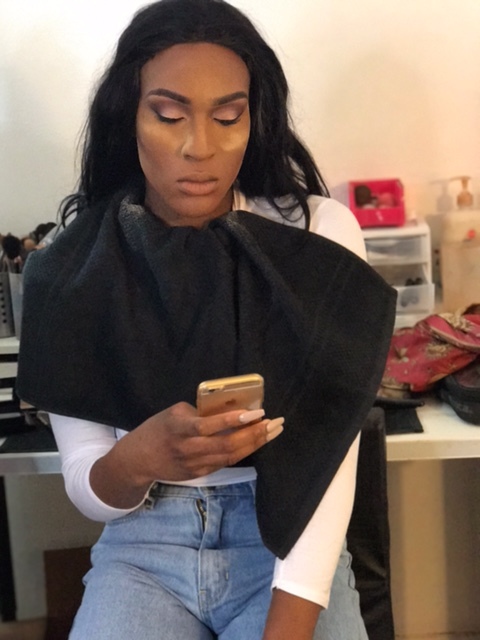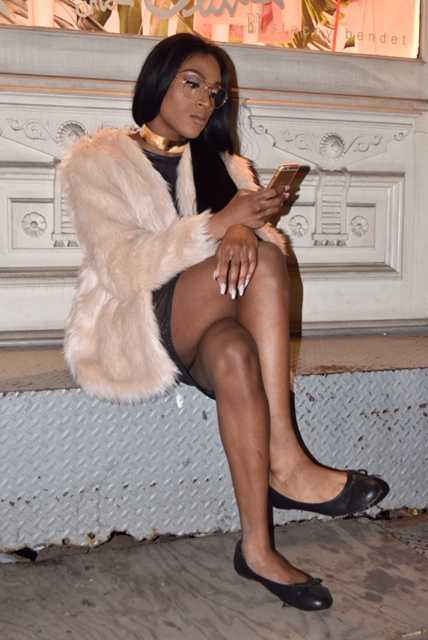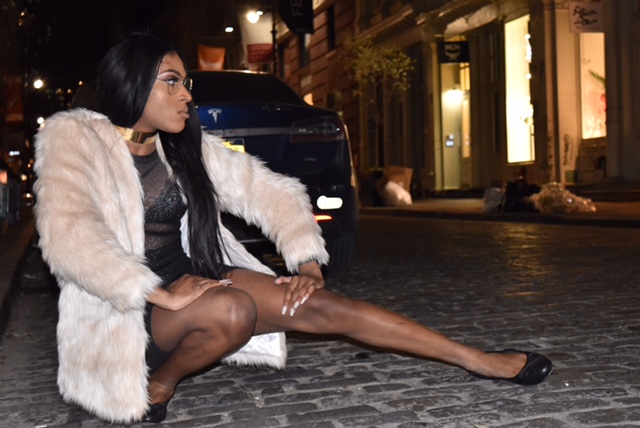$$$ickening: A Black Trans Woman's Reflections on Femme Identity, Class, and Privilege
Personal style is the mode that most of us use to communicate how we want to be seen in this world. The best way to describe my personal style: A marriage of the masculine and the feminine, a mixture of the little things that I mentally accrued throughout my life. The gaudiness and bravado of Hip Hop cool, the glamorous and statement making presence of the gay ballroom scene, and the regimented but soft nature of Parisian work wear. Textures, tones and patterns that move me to my core. My style is a testament to the beauty and effortless cool that women of color, in particular, BLACK women possess. It was in this spirit that I chose to reflect the rich legacies of the black women who came before me and inspired me aesthetically through my visual project, #WhoButABlackWomyn. Throughout this process, I learned so much about the strength that femininity yields, the power of a "look", and how much history goes into every piece I selected to do this lookbook. But as I started my first real art project, a question began to form in my mind, and became harder to ignore as I delved deeper into my work: What was the real price I was willing to pay in order to be seen?
While the fashion world’s classist underpinnings may be obvious, it never stopped me from pursuing fashion and loving it. A queer femme child of the 90's in the ever progressive New York City, a cultural hub for so many budding fashion movements and expressions of personal aesthetics, I grew up in a working class Caribbean household. My mother who worked as a part time maid, (with my sister and me in tow) would ride the now defunct 9 train into another world known as the Upper West Side, an entire universe away from my neighborhood in Queens in which fast-paced working women lined the streets in button down blouses, wide legged slacks, and heels. EVERYBODY wore heels. I had no idea who these strangers were but I knew they were important and probably held very important jobs.
At a very young age, I knew I wanted have a part of this life in any way that I could; it gave me something to aspire to. These trips into the city were one of the high points of my childhood, and further set the tone for my future endeavors in fashion.
“I inhabit a body that is inherently political and everything I am is under attack.”
As I grew up and came to terms with my gender identity, I began to find solace in both music and fashion, the marriage of the two giving birth to artists I grew up loving, namely, Beyoncé Giselle Knowles-Carter, Nicki Minaj, and Azealia Banks. When I started to create my art (which is centered around my personal expression of fashion), I would draw references from them. Theirs were the looks and the music that became the soundtracks and the double-page spreads to my young queer femme life.
Watching Azealia Banks strut down the same NYC streets I grew up in awe of, wearing a big black hat with 30-inches of Brazilian hair cascading out of it, a black crop top, leather suspenders, and grey acid wash jeans, gave me ideas about what a look can consist of. It made me anxious to create, to express the beauty I wanted to see in myself. And as I began to create my art and shoot my project #WhoButABlackWomyn, I learned how much of an arduous process that can be: Having to save up weeks on end, oftentimes going without because I spent my entire paycheck on clothes, jewelry and miscellaneous expenses related to the creation of my looks began to wear on me. I set aside expenses for cab fare because I heard a story about a trans woman getting assaulted on the train by a disgruntled, deranged cis woman passenger who antagonized her because her presence "ain't appropriate for my child." I recalled instances of being harassed by older predatory men on mass transit when I was younger and in drag. These experiences I kept in my spirit as I continued to gather pieces and lock in a date for my lookbook. When I look back at my art project, #WhoButABlackWomyn, I feel pride. I did everything I set out to do, but when I think about how much I had to sacrifice in order to do it, the reality was sobering.
“There are levels to privilege when it comes to wearing whatever you want.”
I think about how classism, wealth and privilege play a part in how we choose to show up in the world. I think about the aforementioned female celebrities whose personal style gave me inspiration to put together looks in deconstructed, tactful ways, and how having an astronomical net worth would affect my presentation. Would it mean never having to spend money on clothes ever again, designers from the very top of the fashion world down to the most recent Parsons graduate lining up to adorn me in their garb? Would it mean being able to afford a personal driver to take me everywhere so I wouldn't have to resort to public transport and subject to the temperament of strangers who could decide at any moment I'm actually just a “man in a dress,” ready to use both physical and verbal violence to avenge the metaphorical wrong they see in me? Does it mean being able to afford protection so that the hostility I would normally face on the street would dwindle from a very real issue in my present reality to that of a slight probability?
As a black femme-identified trans woman, I am hypersensitive to how I am perceived. I am aware of the myriad judgments and projections on to me and my trans body before I even step out of my house in the morning. I inhabit a body that is inherently political and everything I am is under attack. The clothes that I wear and my personal aesthetic are integral parts of me, I wear my looks as an act of self love, courage and resistance. But this life is hard, and because I am not afforded the luxury of ignorance, I have to think about aspects of violence and how I am perceived in the world because they inform my present reality. There seems to be an almost cultural dissonance that comes with liberal, well meaning ideas behind transness and queerness and the concepts of "living in your truth" and "wear whatever you want.” That sounds good in theory, but there are levels to privilege when it comes to wearing whatever you want, and what does personal style mean to a member of a marginalized community where expression of self could make you a target, or a justification for your death, assault etc. What does any of that mean when your survival is inherently tied to every outfit you wear?







